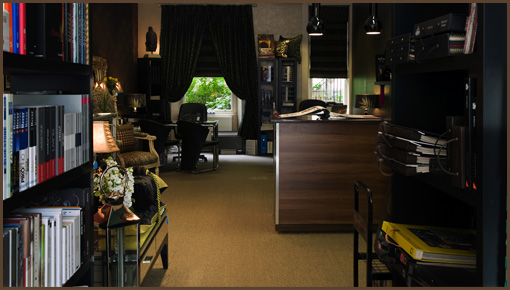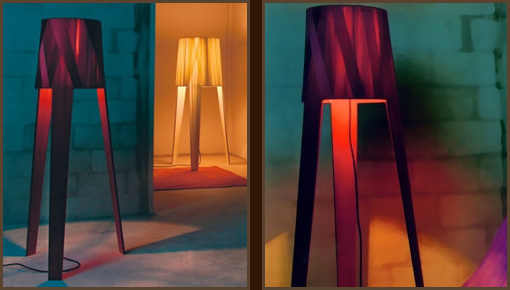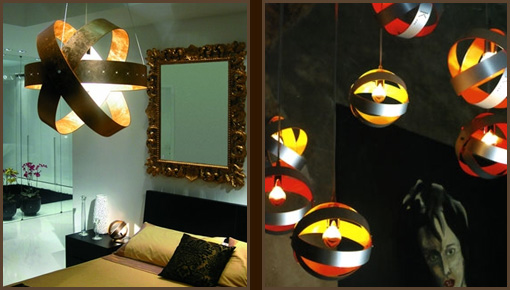
PRESS AREA
Homeplus Scotland Magazine November 2008
LET THERE BE LIGHT...
Never underestimate the power of lighting; quite simply it can make or break the feel of a room. Get it right, and it can add warmth, atmosphere and originality, get it disastrously wrong and it can render a room almost defunct of its original purpose. Dramatic as it may sound, a lounge space with harsh lighting can turn a potentially warm and inviting area into somewhere that feels like a doctor’s waiting room, and likewise a kitchen with low lighting can be pretty impractical when chopping with sharp knives!

If these examples have you reaching for the switch, don’t turn all the lights off and hide in a dark place just yet. Home Plus Scotland has enlisted the help of lovely luminary Becki Linley, Creative Director of Edinburgh’s Trendenza Interior Design to guide us safely through the illuminating world of interior lighting. “Initially you should decide what your main focus is with regard to lighting and ask yourself some key questions before you make any in-roads with cabling or calling the electrician in prematurely,” Becki advises. “Ask yourself the following questions: what will I be using the space for? What is on display in the room and is there anything I want to make a feature of? Who will be using the room? What time of the day will the room mostly be used and where, if anywhere, is the natural light coming in from?”
Becki explains that there are really two key types of light you need to remember, natural and artificial. “You should always try to maximise natural light as it not only brightens up your space dependant on the time of day, but can create really effective natural reflections across surfaces, particularly glass and mirrors” she says.
“You may then want to start thinking about accent lighting and task lighting. While accent lighting will give texture and shape with well placed down lighters, up lighters and directional strip lighting, task lighting is a light source positioned for a specific reason, such as reading or computer lighting.”

With such an array of lighting fixtures on the market these days, it is of course always advisable to carefully plan your lighting scheme before you hit the shops. Becki also points out that the technical and electrical aspects of lighting a room require a touch of forward planning, prior to putting any lighting in place. “Ask yourself, do you want all your lights on one switch or individual switches
or dimmers?” she says. “This is key as circuits can minimise the number of switches you will require whilst effectively operating a bank of lights together. Floor and table lamps can be operated from the same switch bank, limiting the need for individual controls, though you should try and restrict your bank of switches to around four, or else it may look more corporate than residential and with time you may forget what switch works what light.”
“Dimmers, up lighters, down lighters, floor and table lamps can enhance features within a room and focus the eye on traditional aspects such as architectural covings, mirrors, furniture and artwork, but be careful not to over complicate your lighting. Over done, it can begin to resemble an airport landing strip!”

And if it all seems too much like hard (or should that be light) work, there is always the increasingly popular option of getting a specialist in to do the whole thing for you. Not half as extravagant as it sounds, seeking the advice of a lighting consultant might actually save you a considerable amount of time, money and headaches, not to mention the fact that you can end up with a fab, professional new look for your home. These days lighting consultants tend to be offered as part of an overall design refurbishment by companies such as Tredanza, or as a stand alone solo service.
So whether you choose to go it alone or with a little help from outside sources, some careful planning and a touch of originality can have bright results.
“Don't be afraid to put thought into lighting and ask advice from the professionals as good lighting is noticeable without being distracting, whilst bad lighting or lack of lighting can ruin a room and the effect you are trying to create,” concludes Becki. “Strategic planning of lighting can really enhance a room’s quality and appeal, whilst also creating mood settings which are atmospheric, dramatic, inviting, warm and subtle. With a little thought, lighting can truly transform spaces.''
